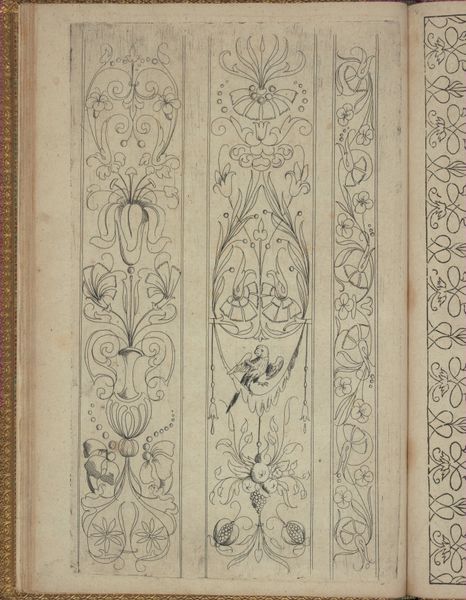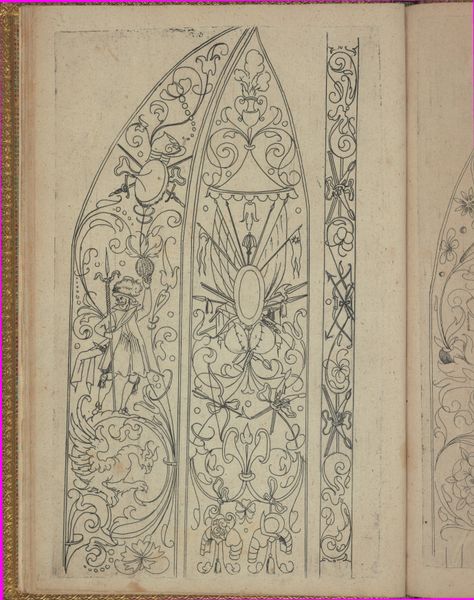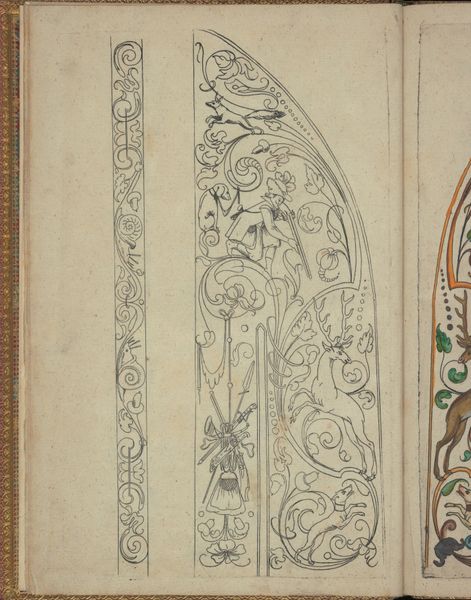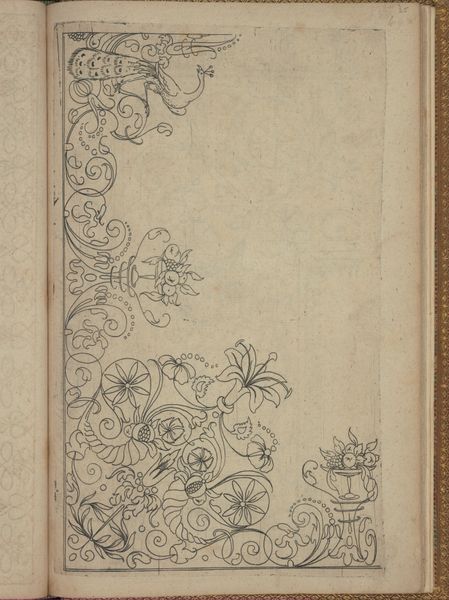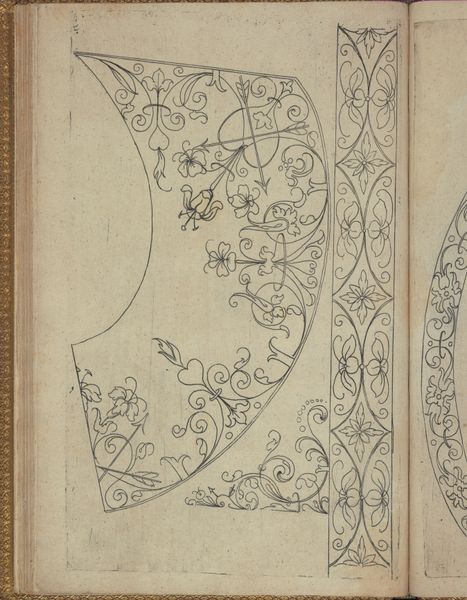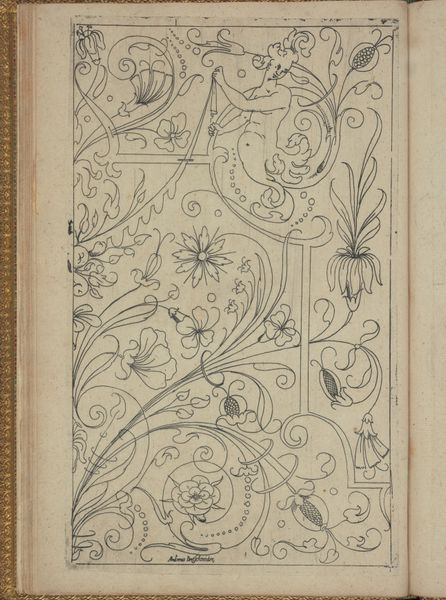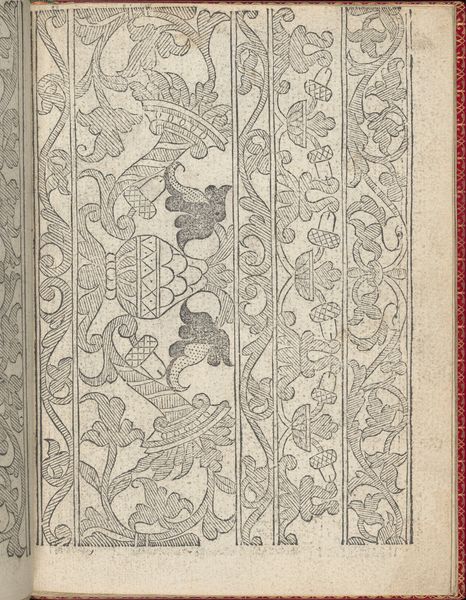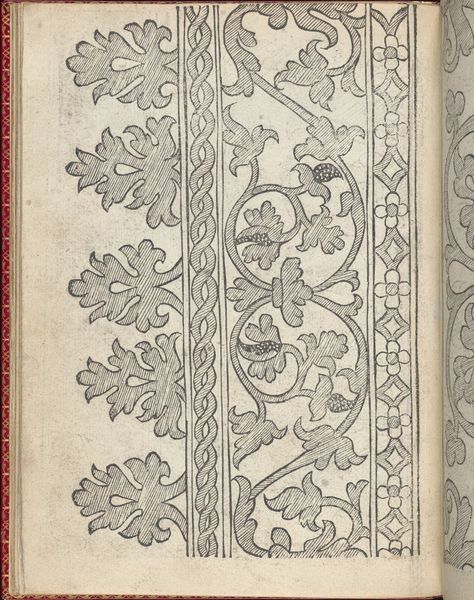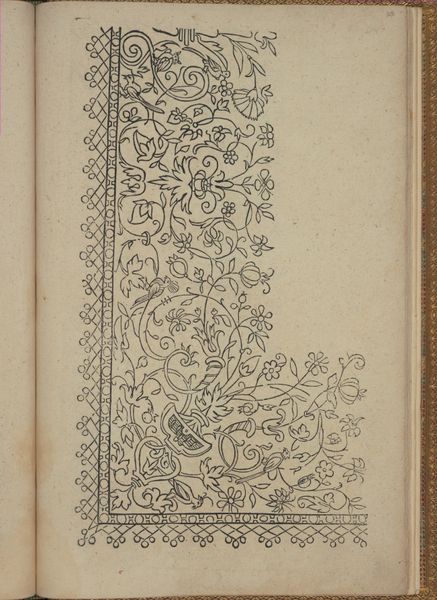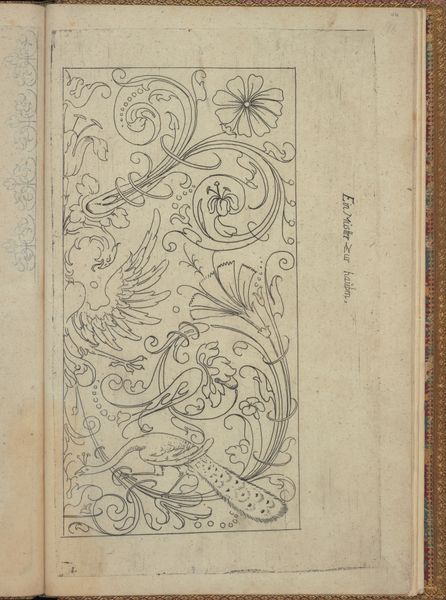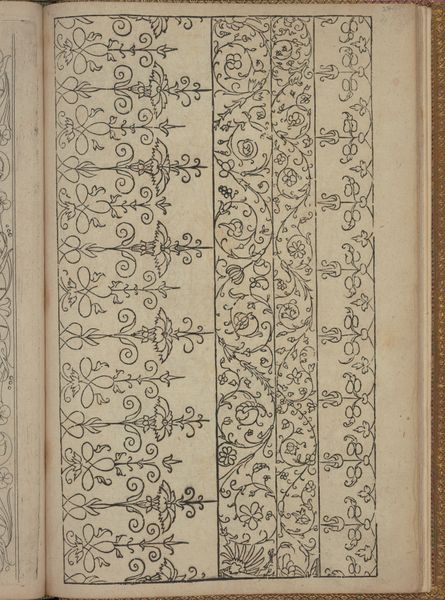
drawing, print, paper, ink
#
drawing
# print
#
flower
#
paper
#
form
#
11_renaissance
#
ink
#
line
Dimensions: Overall: 12 x 8 1/16 in. (30.5 x 20.5 cm)
Copyright: Public Domain
Curator: Hmm, interesting. My initial feeling is of botanical calm, almost meditative in its meticulous details. What's it about? Editor: We are looking at page 17v from Andreas Bretschneider's "New Modelbüch," created around 1615. It is ink on paper. This book resides at the Metropolitan Museum. Curator: Model Book...is this a collection of design ideas then? The tight, clean line work definitely lends itself to reproducible patterns, kind of like stencils or tattoos flash sheets from centuries ago! Editor: Exactly! It served as an encyclopedia of forms. Notice how Bretschneider explores various ornamental patterns. His approach evokes continuity with designs stretching far back through classical antiquity. Each scroll, flower, or vine is imbued with a codified aesthetic and purpose. Curator: And they still work! The arrangement and spacing feels decidedly contemporary. They could be reworked to modern minimalist designs without losing their original feeling. Each shape is simple enough to follow yet intricate together in their rhythmic placement on the page. It gives this piece a distinct liveliness...I get the impulse of early-modern artisan picking and choosing for larger-scale installation, something on the proscenium of an opera house, maybe? Editor: I think that impulse towards application captures something truly integral to its symbolic dimension. Books such as these gave artisans access to designs inspired from antiquity, allowing visual tropes that signify cultural elevation. Look carefully and you'll start seeing direct ancestors to all sorts of familiar imagery around us. Curator: Right. I notice how those tiny variations would add personality depending on which design was implemented where, how, and why! Every repetition becomes unique while being connected, just as relevant today as in 1615! Editor: Agreed. So, reflecting on this page, the forms invite us to think about how symbols move through time. Curator: From paper to stone and back again… endlessly translated by each person who gazes and reinterprets the visual script on its surface. Fascinating!
Comments
No comments
Be the first to comment and join the conversation on the ultimate creative platform.
